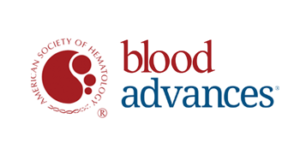 Blood Advances is a semimonthly medical journal published by the American Society of Hematology. It is the first journal to join the Blood family in 70 years and is a peer-reviewed, online only, open access journal. Under the direction of founding editor-in-chief Robert Negrin, MD, Stanford University Medical Center, Stanford, CA, the inaugural issue debuted on November 29, 2016.
Blood Advances is a semimonthly medical journal published by the American Society of Hematology. It is the first journal to join the Blood family in 70 years and is a peer-reviewed, online only, open access journal. Under the direction of founding editor-in-chief Robert Negrin, MD, Stanford University Medical Center, Stanford, CA, the inaugural issue debuted on November 29, 2016.
Blood Advances provides an international forum for the publication of original articles describing basic laboratory, translational, and clinical investigations in hematology. The journal covers all aspects of hematology, including disorders of leukocytes, both benign and malignant, erythrocytes, platelets, hemostatic mechanisms, vascular biology, immunology, and hematologic oncology. All articles undergo a rigorous peer-review and are selected on the basis of the originality of the findings, the superior quality of the work described, and the clarity of presentation.
Disclaimer: The ideas and opinions expressed in Blood Advances do not necessarily reflect those of the American Society of Hematology (ASH) or the Editors of Blood Advances. Publication of an advertisement or other product mention in Blood Advances should not be construed as an endorsement of the product or the manufacturer’s claims. Readers are encouraged to contact the manufacturer with any questions about the features or limitations of the products mentioned. ASH does not assume any responsibility for any injury and/or damage to persons or property arising from or related to any use of the material contained in this periodical. The reader is advised to check the appropriate medical literature and the product information currently provided by the manufacturer of each drug to be administered to verify the dosage, the method and duration of administration, or contraindications. It is the responsibility of the treating physician or other health care professional, relying on his or her independent experience and knowledge of the patient, to determine drug dosages and the best treatment for the patient.
 PATIENT EDUCATION
PATIENT EDUCATION  OBESITY/WEIGHT MANAGEMENT
OBESITY/WEIGHT MANAGEMENT  EXERCISE/TRAINING
EXERCISE/TRAINING  LEGAL MATTERS
LEGAL MATTERS  GUIDELINES/RECOMMENDATIONS
GUIDELINES/RECOMMENDATIONS 